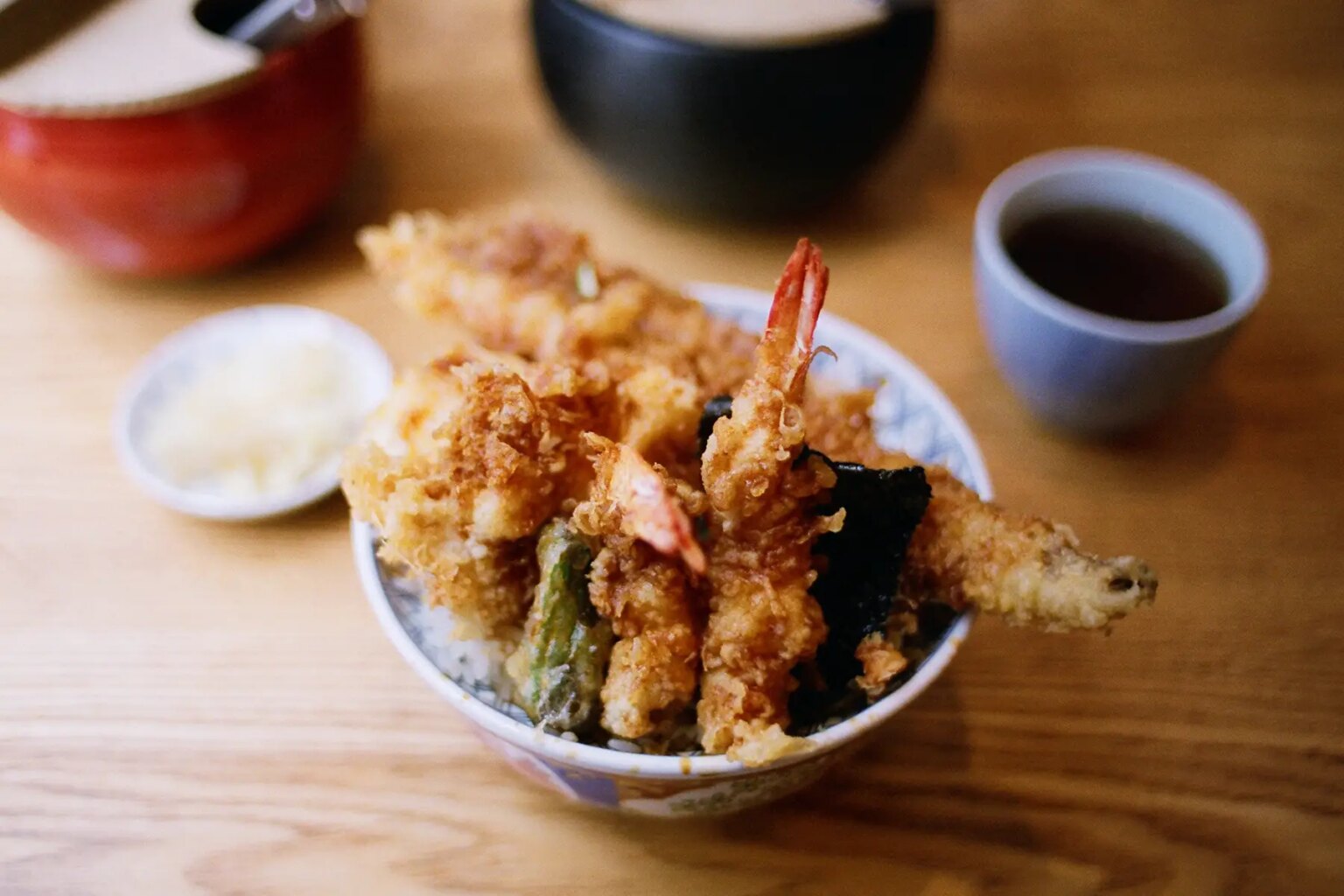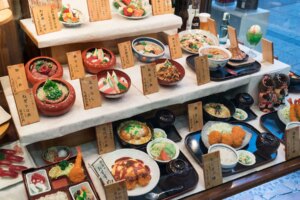Many people consider Japanese cuisine among the best in the world – not only is it healthy, but it’s scrumptious, too. Along with learning the language and sampling other aspects of the culture, getting to know Japanese food is one of the key rites of passage when you move there.
Read on to find some of the best dishes with recipes so you can make your own. Dishes include:
Salmon nigiri sushi
Sushi (寿司) is one of Japan’s most recognizable dishes. It consists of small amounts of vinegar-seasoned rice and other ingredients, such as raw fish or seaweed.
Nigiri sushi is one of the most well-known versions – it comprises a small portion of rice with a thin slice of an ingredient on top, usually fish or tamagoyaki (Japanese omelet). There is often a thin smear of wasabi (わさび) between the two layers.
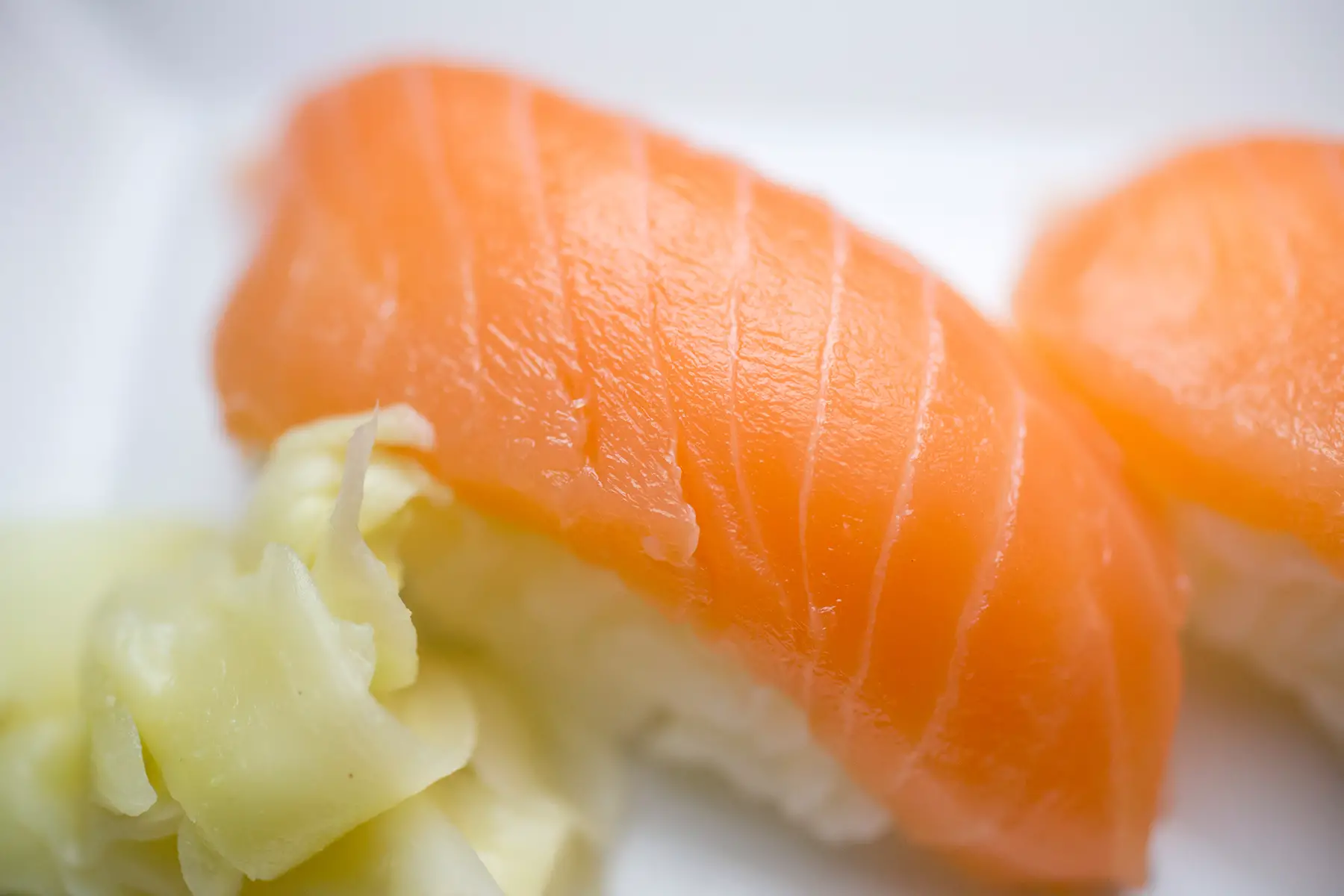
Salmon nigiri sushi, or sake nigiri sushi, consists of a strip of sashimi (raw) salmon and rice. This classic Japanese food doesn’t require many ingredients, so it’s easy to prepare at home.
Traditional accompaniments include soy sauce, wasabi, and pickled ginger.
Make your own
- This online recipe explains all you need to know about making salmon nigiri sushi
- Follow this video tutorial to watch a chef making sushi in real-time
Tonkotsu ramen
Ramen (ラーメン) is another favorite Japanese food among internationals. It consists of noodles, for example, udon or soba, in a flavored soup with different fillings and toppings.
Many regional variations of ramen have developed over the past century.

Tonkotsu Ramen is a meat-based ramen dish that originated in Fukuoka. It is based on a thick, creamy, meaty pork broth made by boiling up bones from pork meat for around 18 hours. You then add noodles, pork belly, and a soft-boiled egg. Additional ingredients include spring onions, bamboo shoots, seaweed, garlic, and sesame seeds.
This is a Japanese classic to enjoy all year round, particularly during the colder winter months.
Make your own
- Check out this authentic Tonkotsu Ramen recipe
- This video explains how to make each component of the dish
Negima yakitori
Yakitori (焼き鳥), which translates as “grilled bird” in English, is a little like a kebab. It’s a quick and easy Japanese food to prepare, involving chicken pieces on a steel or wooden skewer that you cook over a charcoal grill.
Some people make yakitori at home in Japan using a special appliance called a yakitori-yakiki, but it is not a common practice.

Negima yakitori is a variation of this dish that includes chicken thighs or breasts with green onions cooked on skewers. After slicing the meat and onions, you alternate them on the skewer. Then, coat it in a tare sauce – soy sauce with sake, mirin, and honey.
The yakitori is then ready to grill.
Make your own
- These instructions will help you make a winning Negima Yakitori dish
- Watch this video to learn methods and equipment
Chirinabe
Japan’s nabemono (鍋物), or nabe, specialties, are flavorsome hotpots popular during the colder months. Nabe are soups or stews made using a broth, most commonly dashi. Nabe meals are great communal feasts, and at Japanese restaurants, people cook them at the table.
One popular variation, Shabu-Shabu, involves diners dipping pieces of meat or vegetables into a simmering broth until cooked.

Chirinabe is a fish-based version of the dish with cod or sea bass. It also includes tofu and vegetables such as mushrooms, cabbage, and daikon. Ingredients are boiled and served with a dipping sauce, for example, ponzu.
Make your own
- You can cook up your own hearty Chirinabe meal with this detailed recipe
- This instructional video is a great option for visual learners who want to make Chirinabe
Yakisoba
Another popular Japanese noodle dish, yakisoba (焼きそば), is a fried noodle recipe similar to chow mein in Chinese cuisine. The most common method involves frying soba noodles with pork and adding vegetables such as cabbage, onions, and carrots, but you can make it with all kinds of ingredients.
Traditionally, the noodles are mixed into a combination of soy, oyster, and Worcestershire sauce.
Just One Cookbook has a simple recipe for making the sauce from scratch.
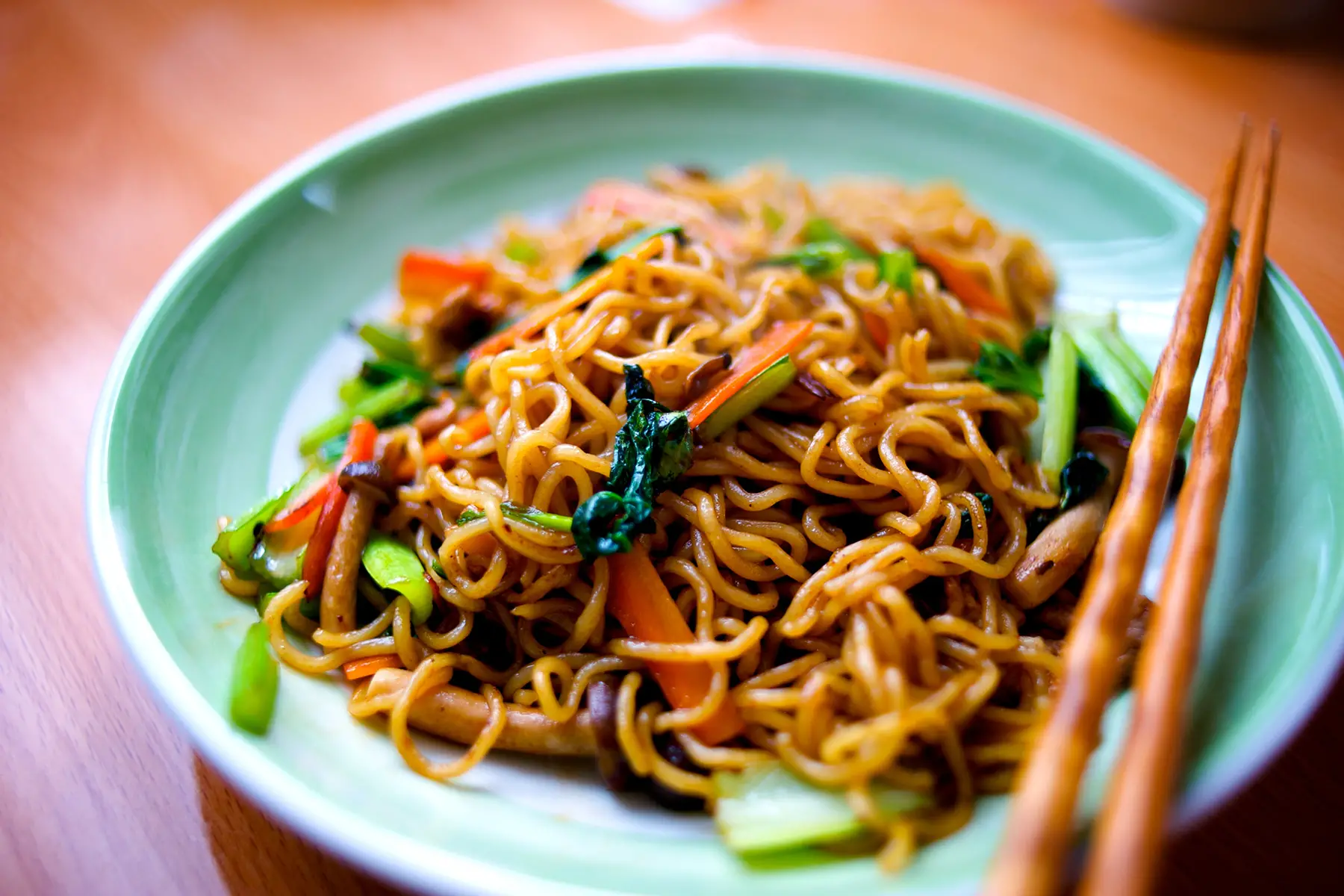
Popular accompaniments for yakisoba include Japanese mayonnaise, fish flakes, and pickled ginger. You’ll also find it at street food outlets, served in a hot dog-style bun.
Make your own
- This authentic recipe explains the ins and outs of making a mouthwatering yakisoba
- Check out this video demonstration that comes with text instructions and pictures
Katsu curry
Another of Japan’s most famous culinary exports, katsu curry (カツカレー), is perhaps the ultimate fusion dish. It marries steamed rice (imported from China) with curry sauce (Indian cuisine introduced via the British) and a breaded meat cutlet (derived from European cuisine).
Japan has a few different curries, and its katsu version is the best-known.
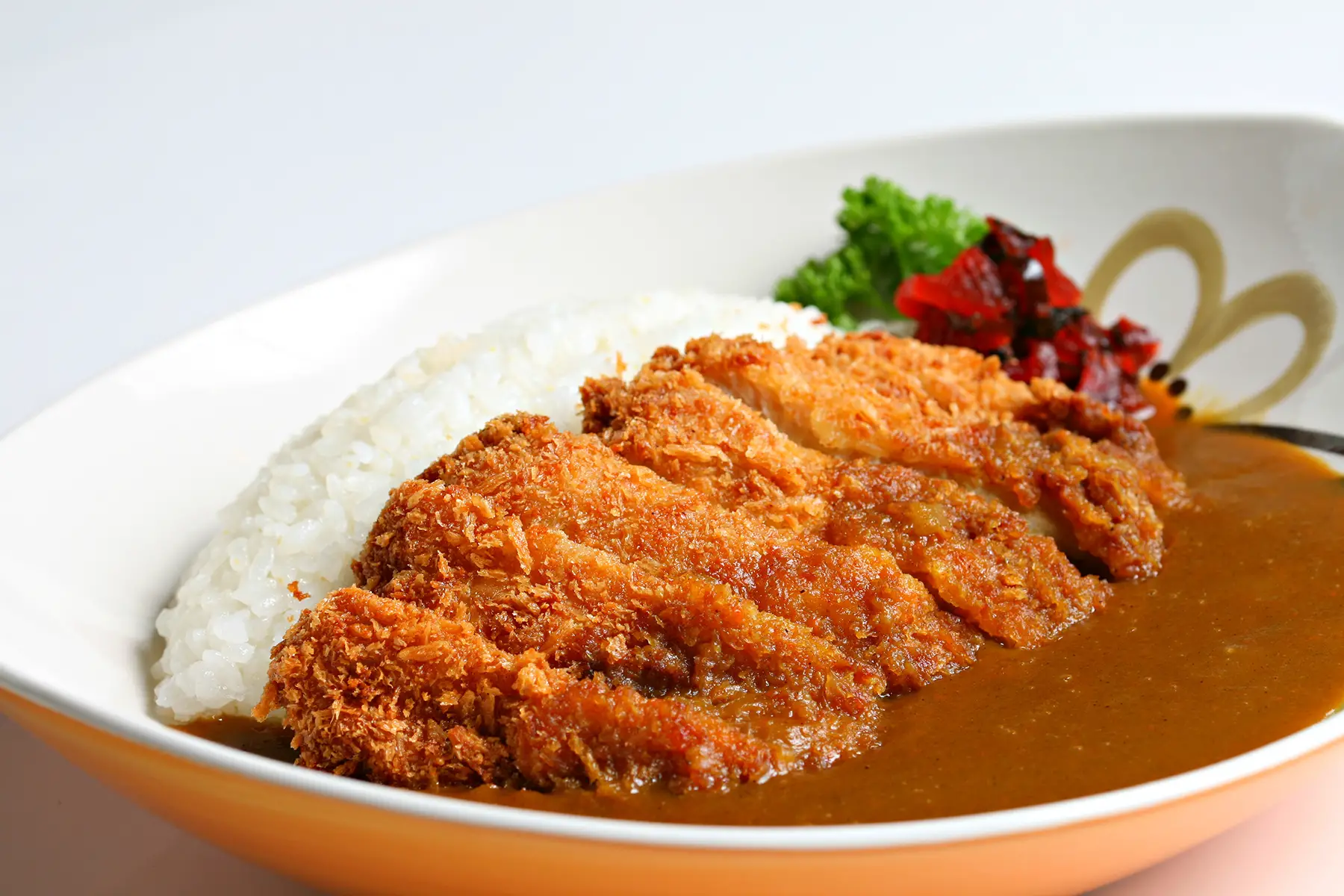
Chicken katsu is the version most internationals are familiar with, but you can use a variety of meats or seafood, such as pork, beef, salmon, or shrimp. This breaded meat is the key element that makes the katsu dish stand out.
You can then add your curry sauce to this and serve it with sides of rice and assorted vegetables.
Make your own
- Sudachi Recipes has a great and easy-to-follow katsu curry recipe
- This video shows how to make this Japanese food in style
Tendon
Tendon (天丼) is a contraction of tempura (fried in batter) and donburi (rice bowl). The dish is an elaboration of tempura dishes in Japan, which have been around for a few centuries and are believed to have come from Portugal.
As the name suggests, it’s a battered and deep-fried ingredient served in a rice bowl. The main constituent is typically seafood, such as shrimp or squid, along with a vegetable, such as eggplant or squash.

You can serve tendon recipes with vegetables (for example, lotus root, green peppers, or green beans) with sauce. The most popular condiment to accompany this dish is tentsuyu, made using dashi and soy.
Make your own
- Impress guests at your home with this tendon recipe with shrimp
- Learn to make the dish using this quick instructional video
- Don’t forget to accompany your tendon with an authentic tentsuyu sauce
Kitsune Udon
Udon, the fat, chewy noodles are popular in Japan. They are made from wheat flour, contrasting with the thin, stringy buckwheat soba noodles.
In the summer, people often eat chilled udon, but these noodles also star in many scrumptious hot dishes.
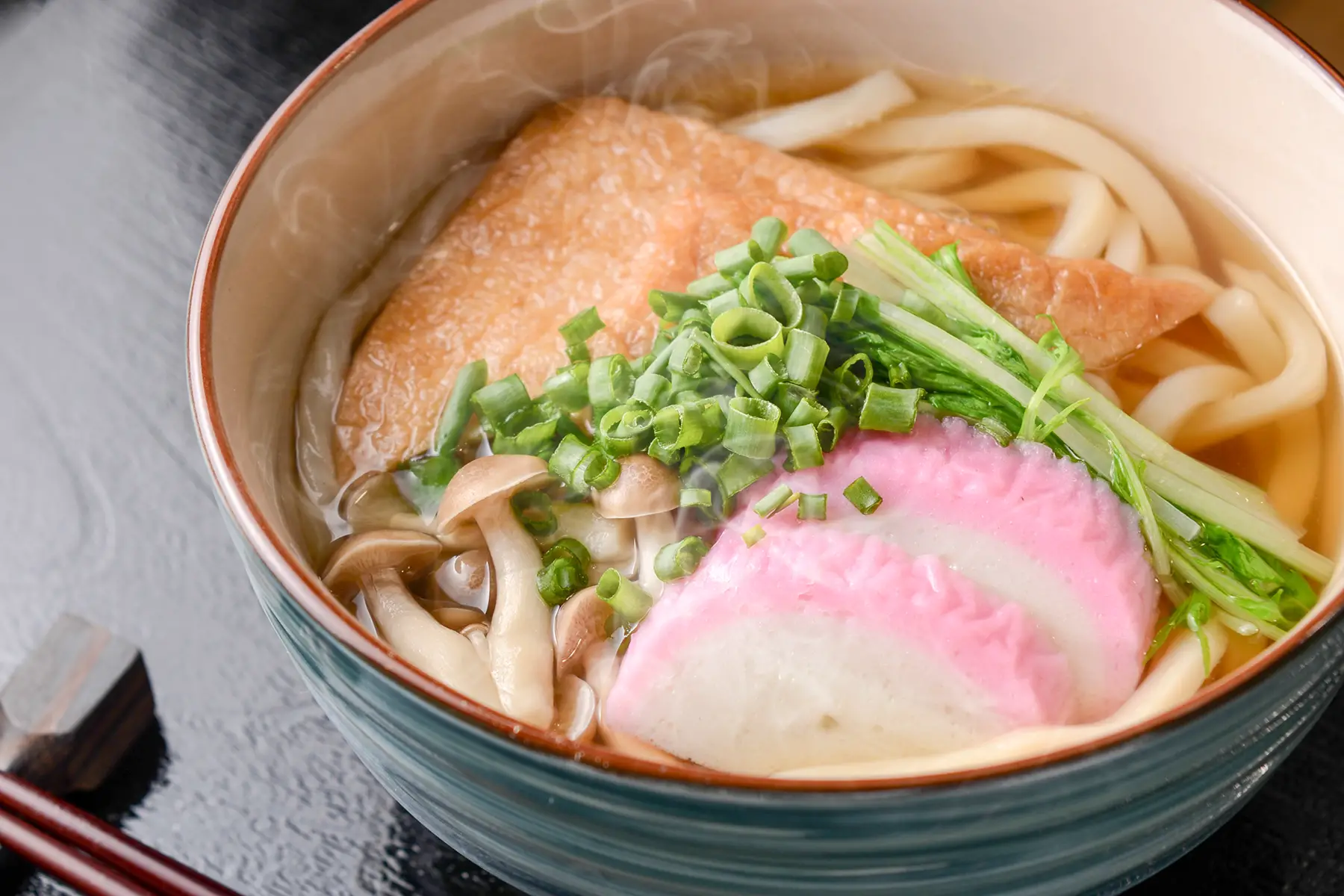
One such specialty is kitsune udon (きつねうどん). This consists of udon noodles in a dashi broth with deep-fried tofu slices. The name translates as “fox udon” and comes from an old Japanese folk tale suggesting that foxes like deep-fried tofu.
You can add complementary ingredients to your dish, for example, green onions or fishcakes. Although originally from Osaka, kitsune udon is now popular across Japan.
Make your own
- Follow these instructions to make a delicious version of kitsune udon
- Watch this video for a practical demonstration
Okonomiyaki
If you become familiar with Japanese street food, you will learn all about okonomiyaki (お好み焼き). The delectable dish sells at stalls across the country. Although not so well-known overseas, it’s a big hit in Japan.
It’s a kind of Japanese pancake with pan-fried batter made of eggs, flour, water, shredded cabbage, and yam. You place the batter on a grill and add a wide variety of ingredients, including meat, seafood, vegetables, or cheese.
The dish is typically finished with a sprinkling of fish, seaweed flakes, or pickled ginger and a hit of Japanese mayonnaise and okonomiyaki sauce.
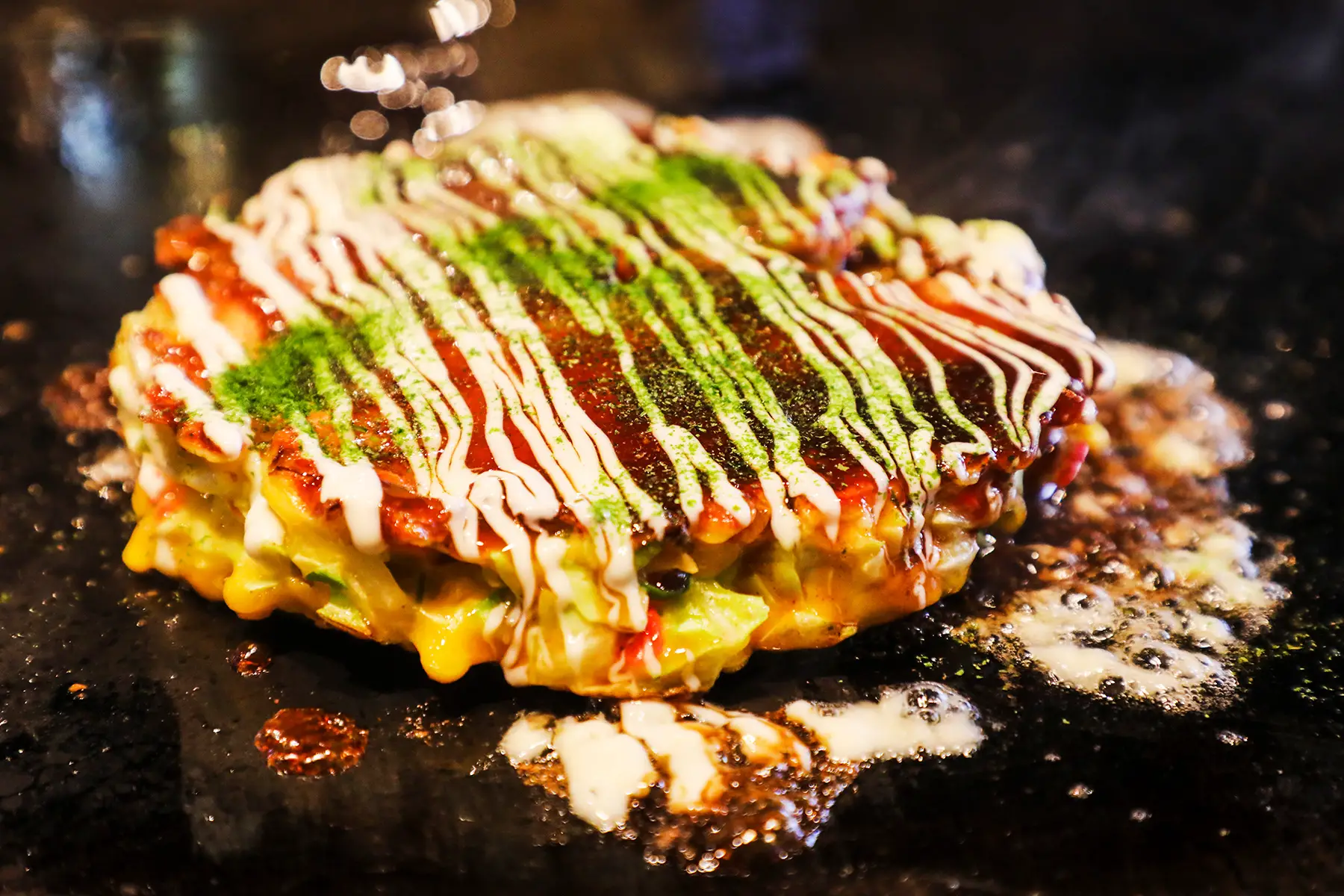
The flexibility of okonomiyaki regarding which ingredients you add is evident in the name, which translates as “grilled as you like it.”
Originating in Osaka, it became popular after World War II as an easy-to-prepare, filling, and sustainable meal when the country had a rice shortage. The Osaka version of okonomiyaki is the most famous, but there is another version from Hiroshima, which layers the ingredients rather than mixing them.
Another difference is that the Hiroshima okonomiyaki commonly includes a noodle base.
Make your own
- Check out this recipe for the classic Osaka okonomiyaki.
- This recipe shows how to make okonomiyaki with a Hiroshima twist
- If you want to make your okonomiyaki sauce from scratch, try this recipe
Nama Yatsuhashi
We finish with a dessert, and this one is a regional specialty of Kyoto.
Yatsuhashi is a type of mochi (餅), a tiny Japanese cake made from glutinous rice found in shops and eateries nationwide.
Nama yatsuhashi (生八橋) consists of a steamed triangular-shaped case made from rice flour, sugar, and cinnamon, completed with a sweet red bean paste filling.

You can find yatsuhashi in tea shops and confectionery stores in the Kansai region. Popular as a souvenir and a food accompaniment to a delicious cup of Japanese tea, the dessert originated in late 17th-century Japan. According to local legend, it gets its name from a renowned harp player of the era, Kengyo Yatsuhashi. This is why the cakes have a harp-like shape.
Make your own
- If you fancy trying your hand at an authentic Japanese dessert, this recipe shows how to make the perfect nama yatsuhashi
- This video explains how to make both nama yamahashi and the original baked version
